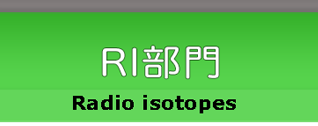第55回実験センターセミナー
演 者
理化学研究所 脳科学総合研究センター 脳皮質機能構造研究チーム
チームリーダー Dr.Kathleen S. Rockland、Dr.Noritaka Ichinohe
日 時
平成16年11月16日(火)14:00〜
場 所
基礎研究棟2階 教官ロビー
概 要
Cortical modularity is strongly identified with thalamocortical terminations in layer 4 of primary sensory areas. These terminate in domains about 0.5mm in diameter (”columns”). At the same time, however, there have been persistent reports of a smaller scale modularity (< 0.1mm); for example, bundles of pyramidal cell apical dendrites. Recently, we have identified a micromodular honeycomb specialization (center-to-center < 0.1mm) at the border of layers 1 and 2 in many cortical areas. In the rat visual cortex, this consists of 1) alternation of thalamocortical connections (in the hollows) and zinc-positive corticocortical connections (in the walls); 2) co-mingled zinc-positive cortical terminations and inhibitory parvalbumin-positive (PV+)
dendrites (both in the walls); and subpopulations of apical dendrites preferentially localized to the walls (those from neurons in layer 2) or hollows (those from neurons in deeper layers). The densities of PV+ and
zinc-positive terminations show area and species specific differences, as does the organization of dendritic bundles. One implication of these findings is that in neocortex, as in limbic cortices, layer 2 has a distinct and prominent role. In addition, the high levels of zinc in the honeycomb walls recall the mossy fiber terminations in the CA3 sector of the hippocampus and, like these, may be involved in the modulation of synaptic dynamics and plasticity.
ロックランド博士のラボではシステム科学を念頭に置いた主に形態学的なアプローチにより、大脳皮質の微小回路および領域間相互結合関係を研究しておられます。サル視覚連合野と聴覚連合野を主な対象とし、神経細胞また線維連絡のサブタイプの解析、皮質内局所回路、皮質-皮質間結合、視床-皮質間結合など異なる種類の結合の間の相互関係の解析、皮質コラムなどの機能構造単位の構造解析を行っておられます。
共催:分子神経科学研究センター、
動物生命科学研究センター、
実験実習機器センター
| このセミナーは大学院の講義として認定されています。 |
 前へ 前へ
|
先頭へ
|
Last Updated 2005/7/21













